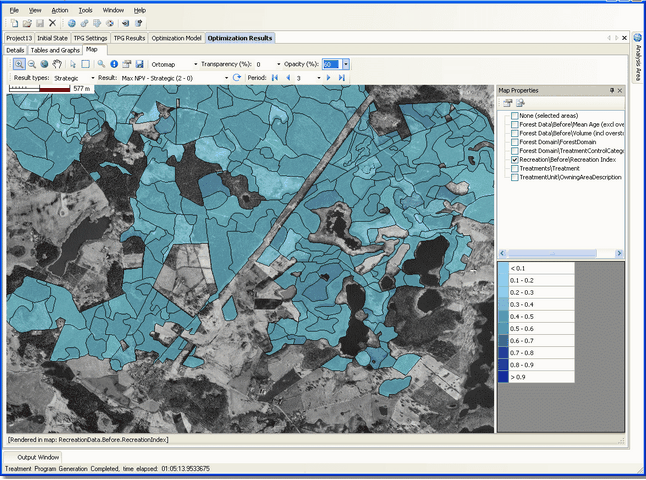PlanWise
PlanWise is a powerful analysis and planning tool that has a wide range of applications both in terms of the size of the geographical area of analysis and the type of questions that can be addressed.

PlanWise is a tool for analyzing different forest management options in order to identify the best approach based upon different objectives. It is intended for use with medium and large forest holdings. PlanWise takes into account not only timber and biofuel production but also carbon storage, suitability for recreational use and environmental aspects. For each stand a number of different management strategies are automatically generated. Each strategy contains forest management operations and the resulting impacts on the stand's development over time. Stands can easily be grouped, for example, stands with similar strategic objectives. For each group the user defines a framework specifying which forest management operation are to be undertaken. An optimization routine is then applied to identify the best alternatives for each stand. This step takes into account the selected management strategy and any eventual restrictions. A typical management strategy may be maximum economic yield (in terms of net present value) in combination with, for example, a requirement of consistent timber supply or a specific environmental restriction. PlanWise differs from the interactive analysis of stands in StandWise and the regulatory controlled approach in RegWise. The silvicultural and harvesting measures which can be studied in all three software applications are:
| • | Regeneration (planting, sown or natural regeneration; with or without soil scarification) |
| • | Cleaning |
| • | Thinning (with or without removal for biofuel) |
| • | Fertilization |
| • | Regeneration felling (with or without removal for biofuel; with or without seed trees or shelter trees left) |
| • | Continuous cover forest management |
The results are presented in tables, maps and graphs describing the initial state, future state and the outcomes based on different usage within the analyzed area.
Long-term planning is usually undertaken for a single rotation period (100 years), divided into five year blocks. In PlanWise there is also a module for shorter-term, tactical planning which can be undertaken on an annual scale for periods of 10-15 years. Normally the effects of forest management operations are analyzed at the forest holdings scale, however PlanWise can also be applied to, for example, forest landscapes, drainage basins or near-urban areas.
Get started!
The main steps in a PlanWise-analysis consist of:
|

